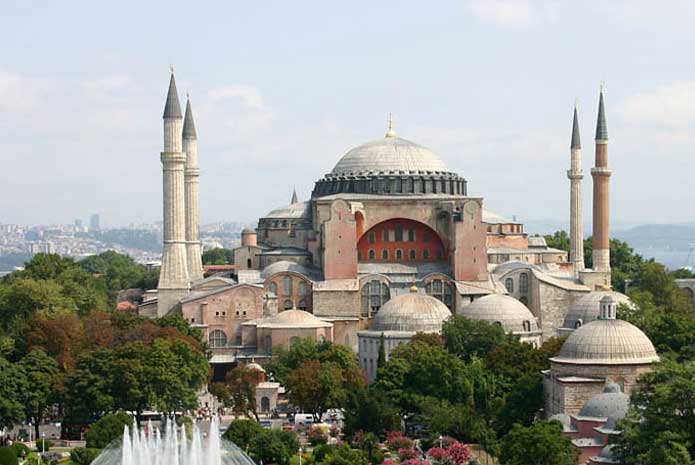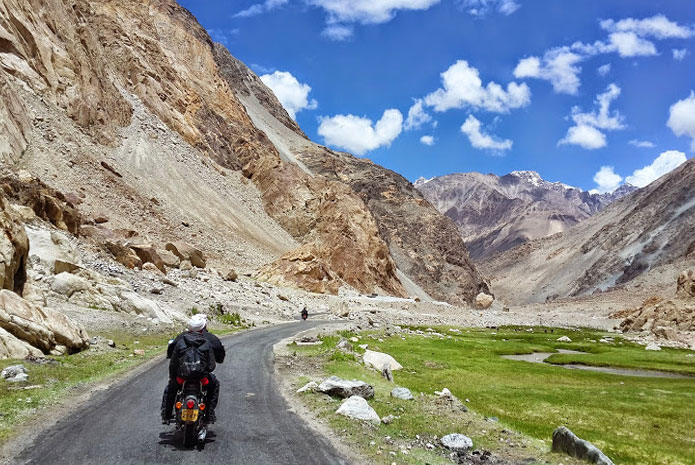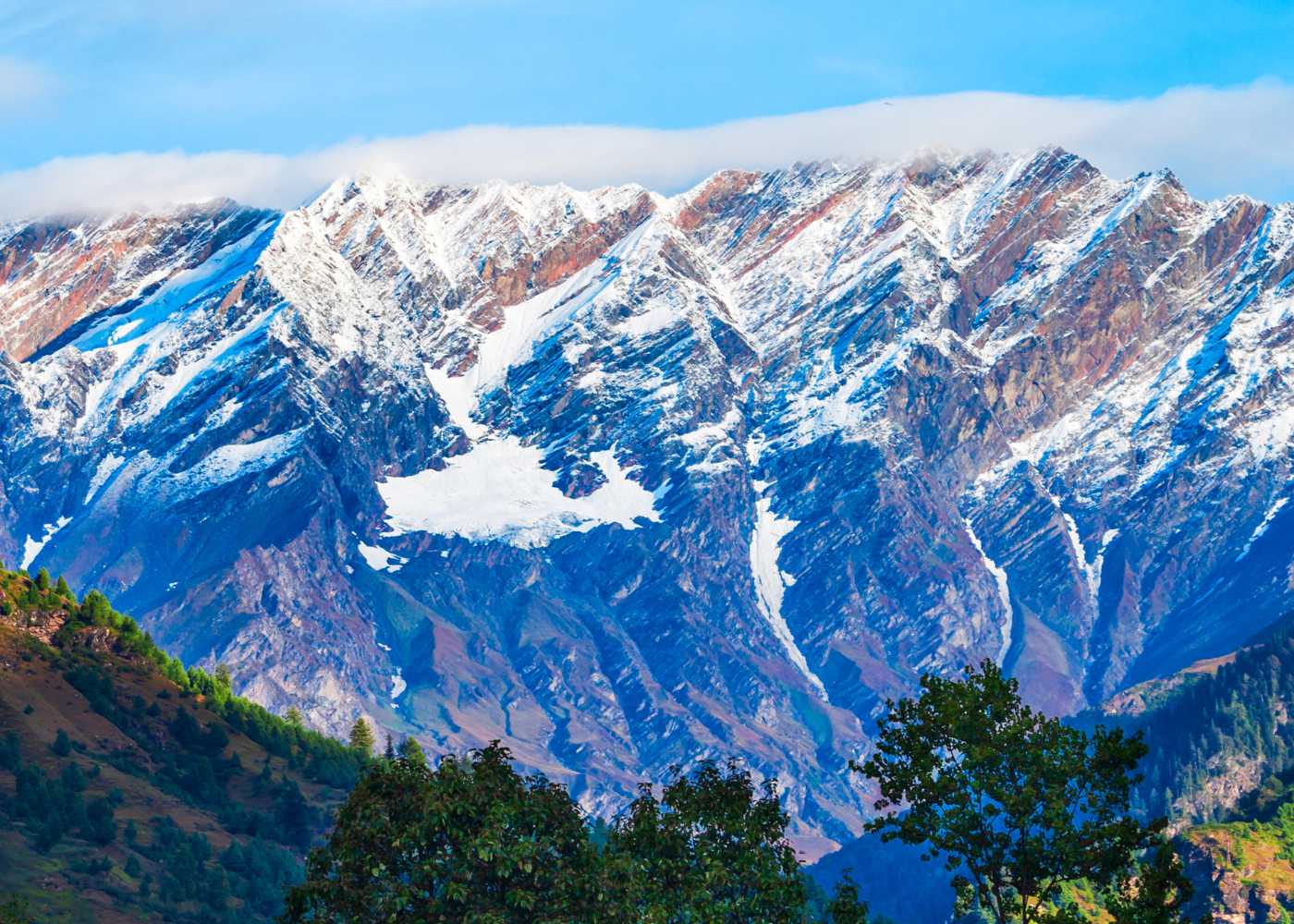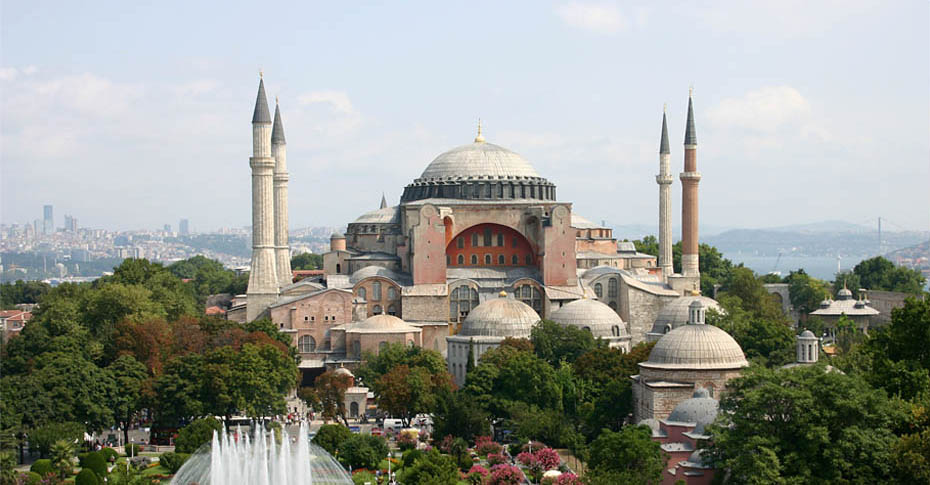
Hagia Sofia – Istanbul, turkey ( AD 532) Hagia Sophia is a former Greek church later an imperial mosque, and now a museum in Turkey. From the date of its construction in 537 until 1453, it served as an Eastern Orthodox cathedral and seat of the Patriarchate of Constantinople, except between 1204 and 1261, when it was converted to a Roman Catholic cathedral under the Latin Empire.
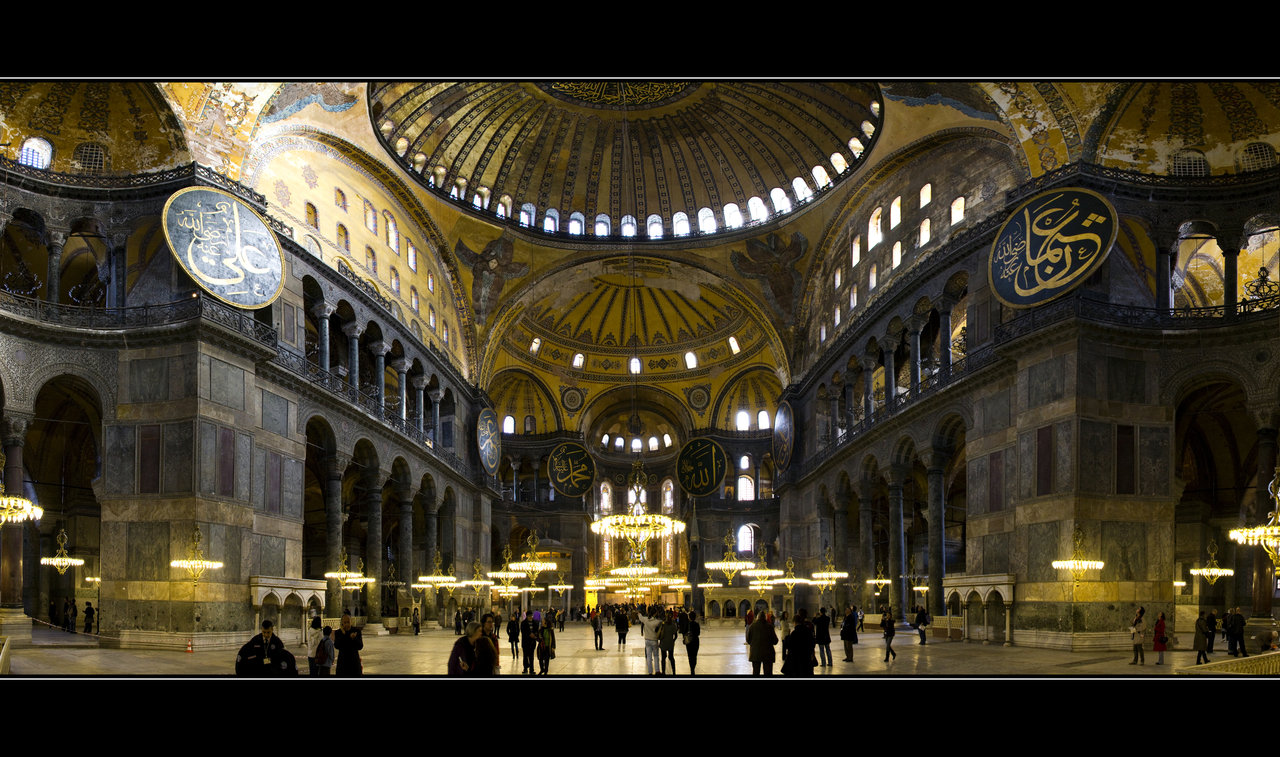
The building was a mosque from 29 May 1453 until 1931. It was then secularized and opened as a museum on 1 February 1935. Famous in particular for its massive dome, it is considered the epitome of Byzantine architecture and is said to have “changed the history of architecture.” It remained the world’s largest cathedral for nearly a thousand years thereafter, until Seville Cathedral was completed in 1520. The current building was originally constructed as a church between 532 and 537 (in Just six sears), on the orders of the Byzantine Emperor Justinian. It was designed by the Greek scientists Isidore of Miletus, a physicist, and Anthemius of Tralles, a mathematician. In 1453, Constantinople was conquered by the Ottoman Turks under Sultan Mehmed II, who ordered this main church of the Orthodox Christianity converted into a mosque.
Nevertheless, the Christian cathedral made a strong impression on the new Ottoman rulers and they decided to convert it into a mosque. The bells, altar, iconostasis and sacrificial vessels and other relics were removed and the mosaics depicting Jesus, his Mother Mary, Christian saints and angels were also removed or plastered over.
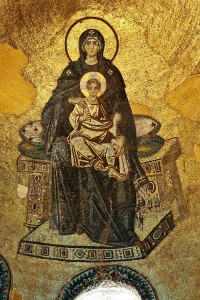
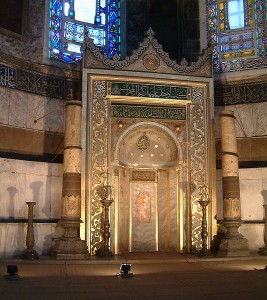
Islamic features – such as the minbar and four minarets – were added. It remained a mosque until 1931 when it was closed to the public for four years. It was re-opened in 1935 as a museum by the Republic of Turkey. From its initial conversion until the construction of the nearby larger Sultan Ahmed Mosque (Blue Mosque of Istanbul) in 1616, it was the principal mosque of Istanbul. The Hagia Sophia served as inspiration for many other Ottoman mosques, such as the Blue Mosque, the Şehzade Mosque, the Süleymaniye Mosque, the Rüstem Pasha Mosque and theKılıç Ali Paşa Mosque.
Museum (1935–present) In 1935, the first Turkish President and founder of the Republic of Turkey, Mustafa Kemal Atatürk, transformed the building into a museum. The carpets were removed and the marble floor decorations such as the Omphalion appeared for the first time in centuries, while the white plaster covering many of the mosaics was removed.
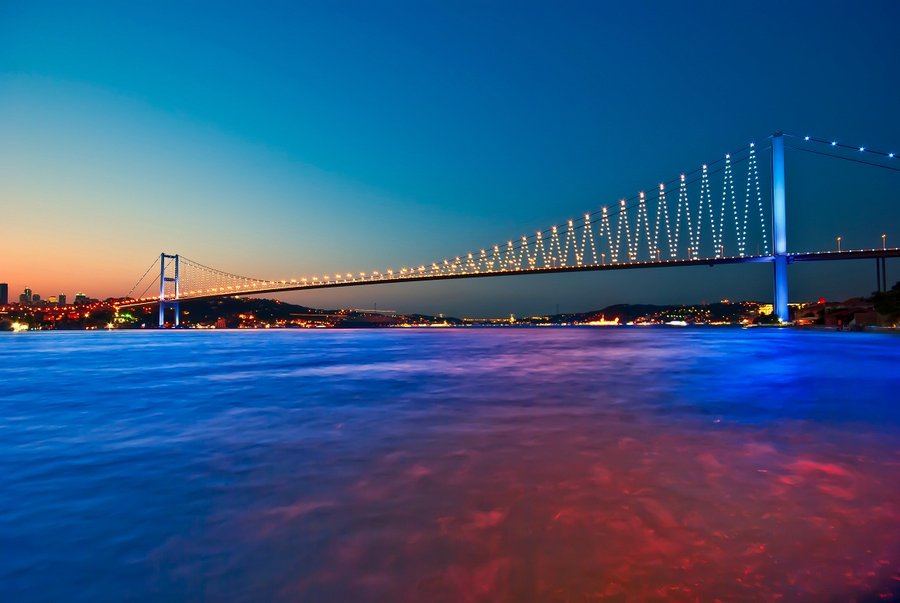
Istanbul or Constantinople Istanbul, is the largest city in Turkey. With a population of 13.9 million, the city forms one of the largest urban agglomerations in Europe and is the second-largest city in the world by population within city limits. Istanbul’s vast area of 5,343 square kilometers (2,063 sq mi) is coterminous with Istanbul Province, of which the city is the administrative capital.
Istanbul is a transcontinental city, straddling the Bosphorus—one of the world’s busiest waterways—in northwestern Turkey, between the Sea of Marmara and the Black Sea. Its commercial and historical centre lies in Europe, while a third of its population lives in Asia. The older name of Istanbul was, Constantinople. The city was originally founded as a Greek colony under the name of Byzantium in the 7th century BC. It took on the name of Konstantinoupolis (“city of Constantine”,Constantinople) after its re-foundation under Roman emperor Constantine I, who transferred the imperial capital from its historic base, Rome, to Byzantium in 330 AD and designated his new capital Nova Roma or “New Rome.”
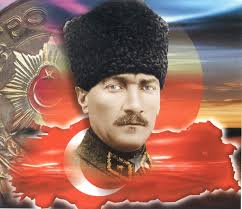
Mustafa Kemal
Atatürk Mustafa Kemal Atatürk (19 May 1881 – 10 November 1938) was a Turkish army officer in the Ottoman military,revolutionary statesman, and the first President of Turkey. He is credited with being the founder of the Republic of Turkey. Atatürk was a military officer during World War I. Following the defeat of the Ottoman Empire in World War I, he led Turkish national movement in the Turkish War of Independence. His military campaigns led to victory in the Turkish War of Independence.
Atatürk then embarked upon a program of political, economic, and cultural reforms, seeking to transform the former Ottoman Empire into a modern, secular, and democratic nation-state. Under his leadership, thousands of new schools were built, primary education was made free and compulsory, while the burden of taxation on peasants was reduced. The principles of Atatürk’s reforms, upon which modern Turkey was established, are referred to as Kemalism.

Architecture – Hagia Sophia is, one of the great domed buildings of the world. When we say great dome means 31 meter (100 ft) in diameter, 62 meter height!! Church of Hagia Sofia “holy wisdom” was built in just 6 years 532 to 537!! Hagia Sofia was the largest church was ever been built in the early Christian world. “how is the dome supported in mid air?” Was the question to every visitor. The answer is the structural engineering was concealed. Material used -stone, bricks, mortar, iron and timber for ties and cramps. It’s architecture was impressively copied and developed in the mosque of Suleyman the Magnificent by the architect Sinan. The last major repairs were carried out by the Swiss architects GASPARE @ FOSSATI in 1847- 1849 and a remarkable enterprise of consolidation and redecoration was ready!
Visit the Hagia Sofia with our Turkey Holiday Packages with Flamingo Transworld!
